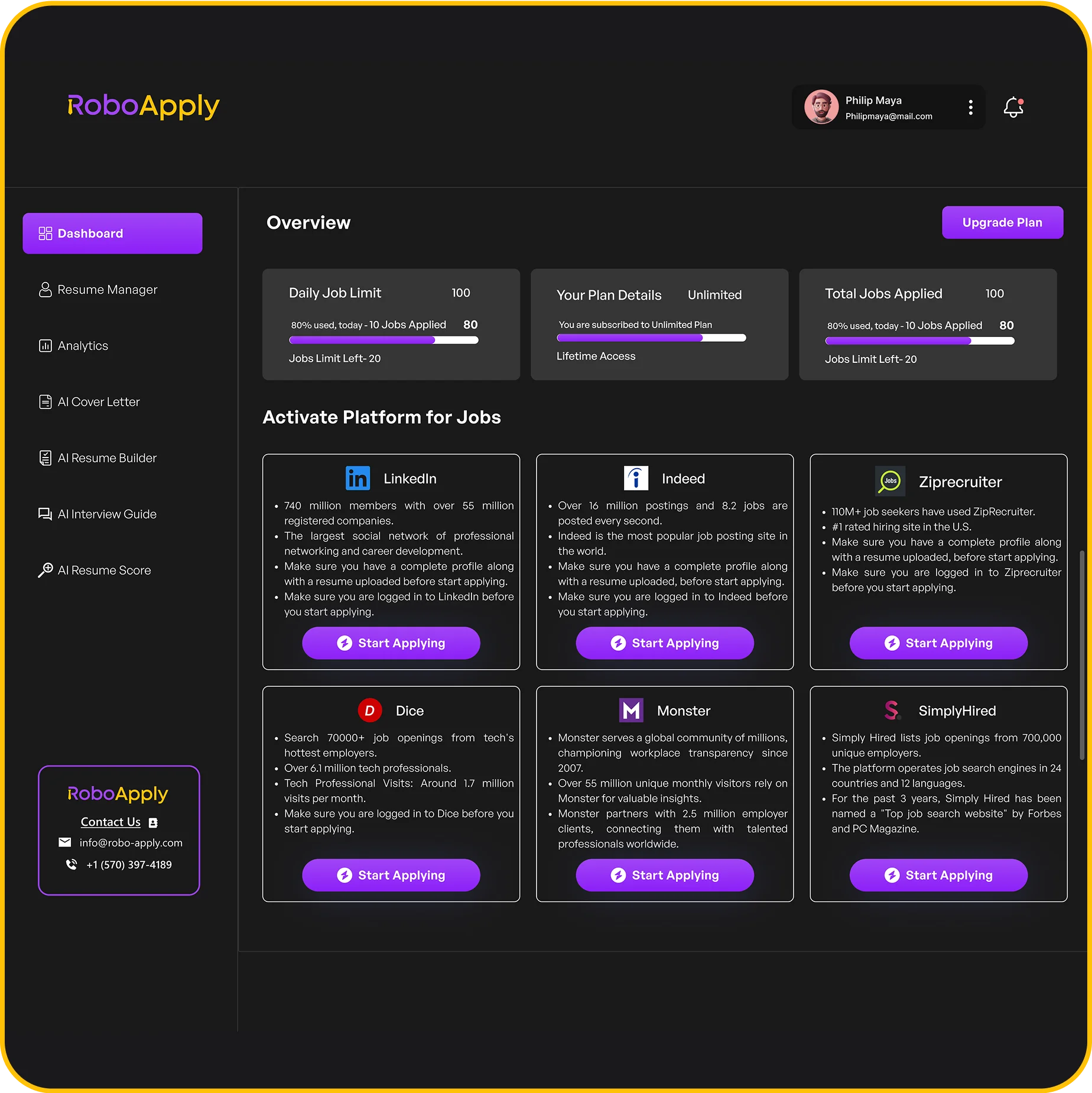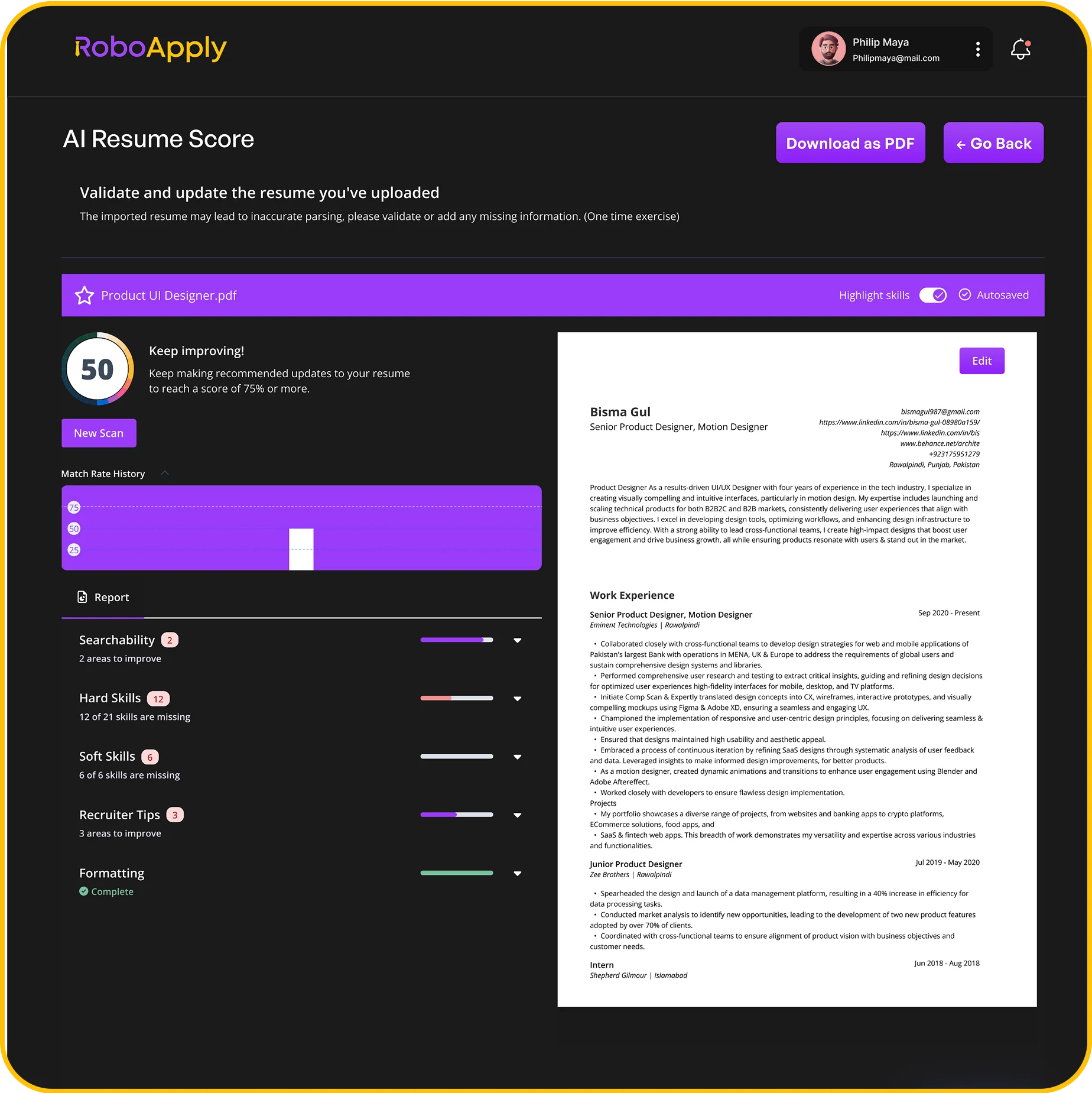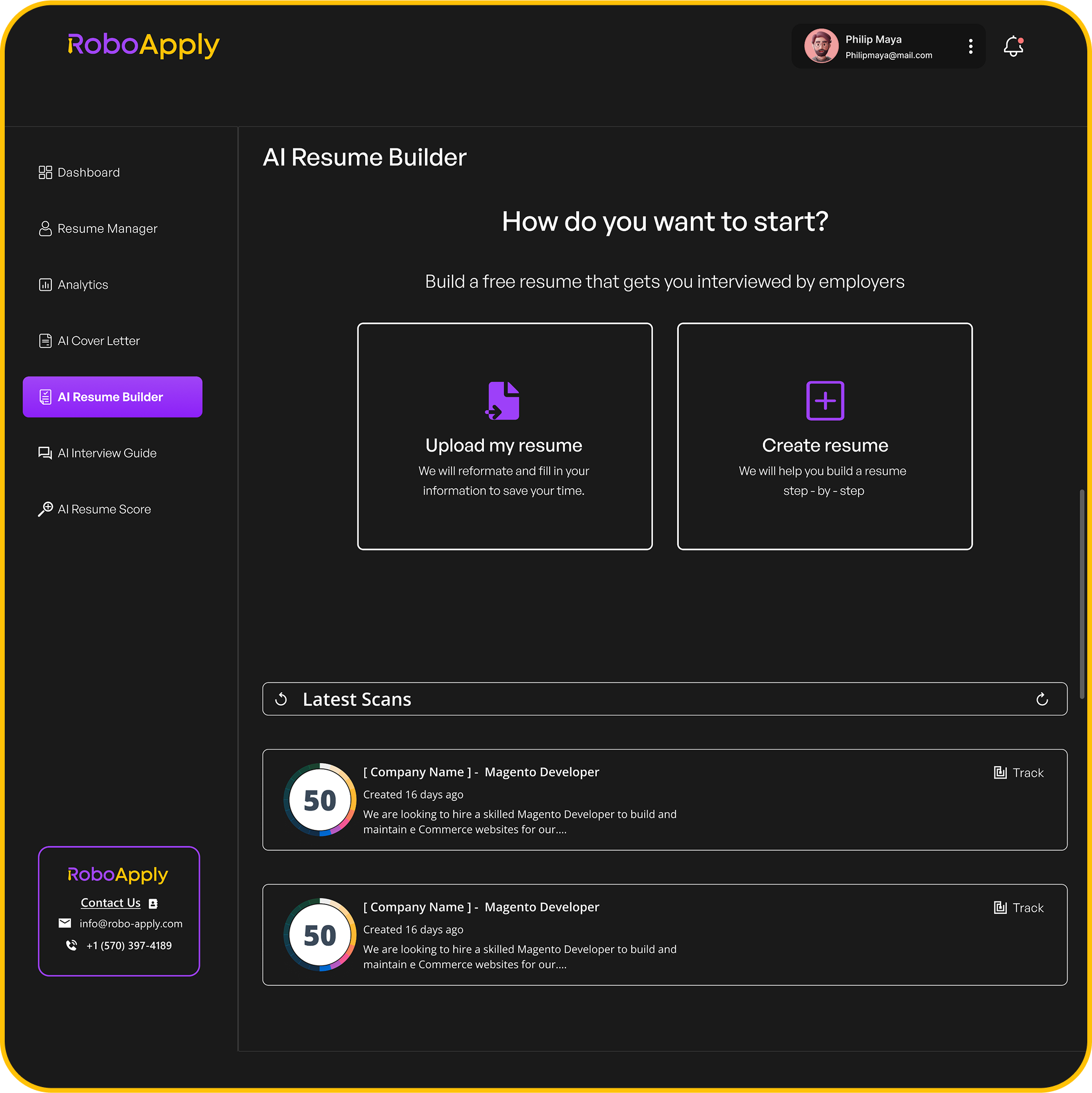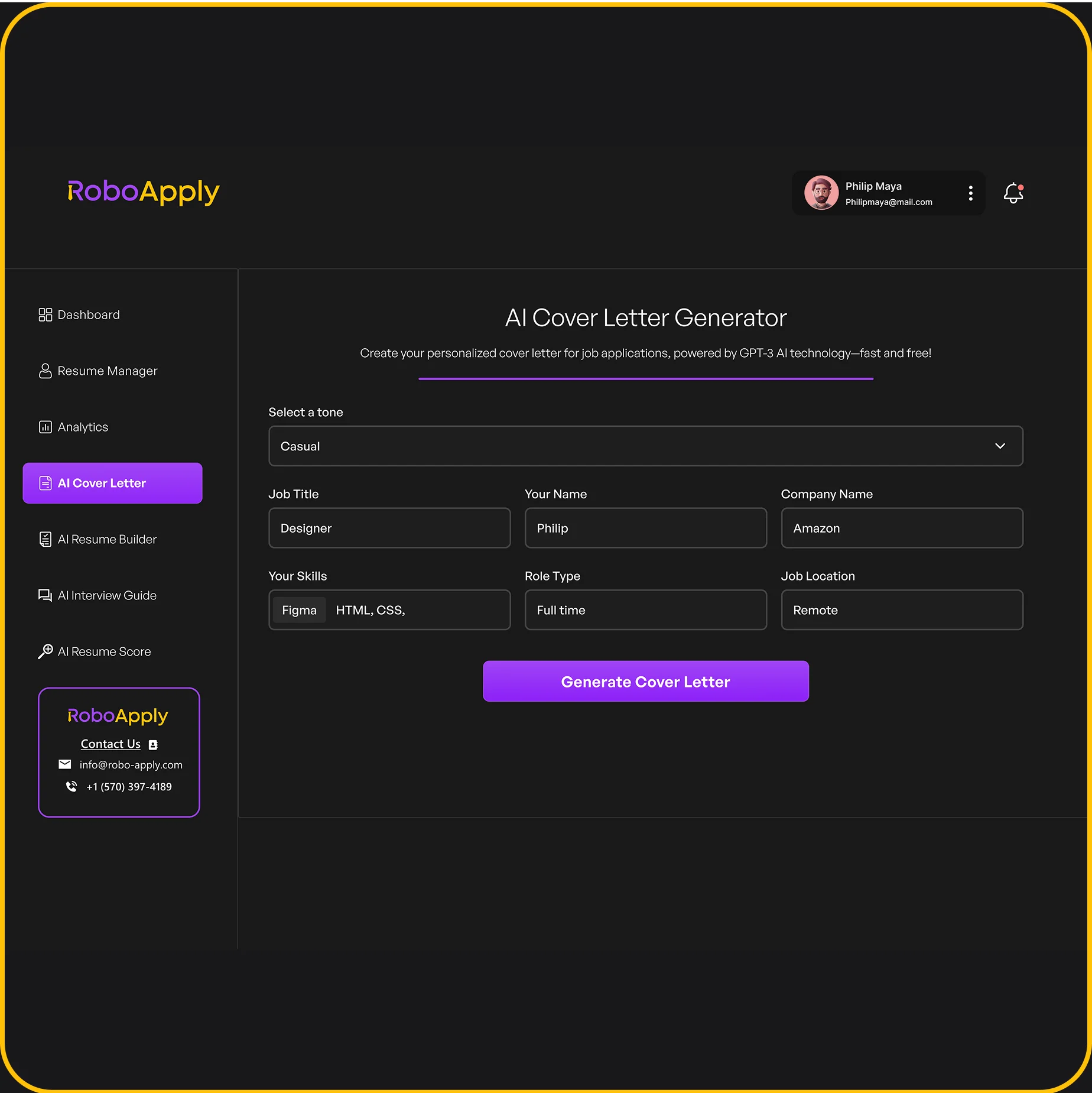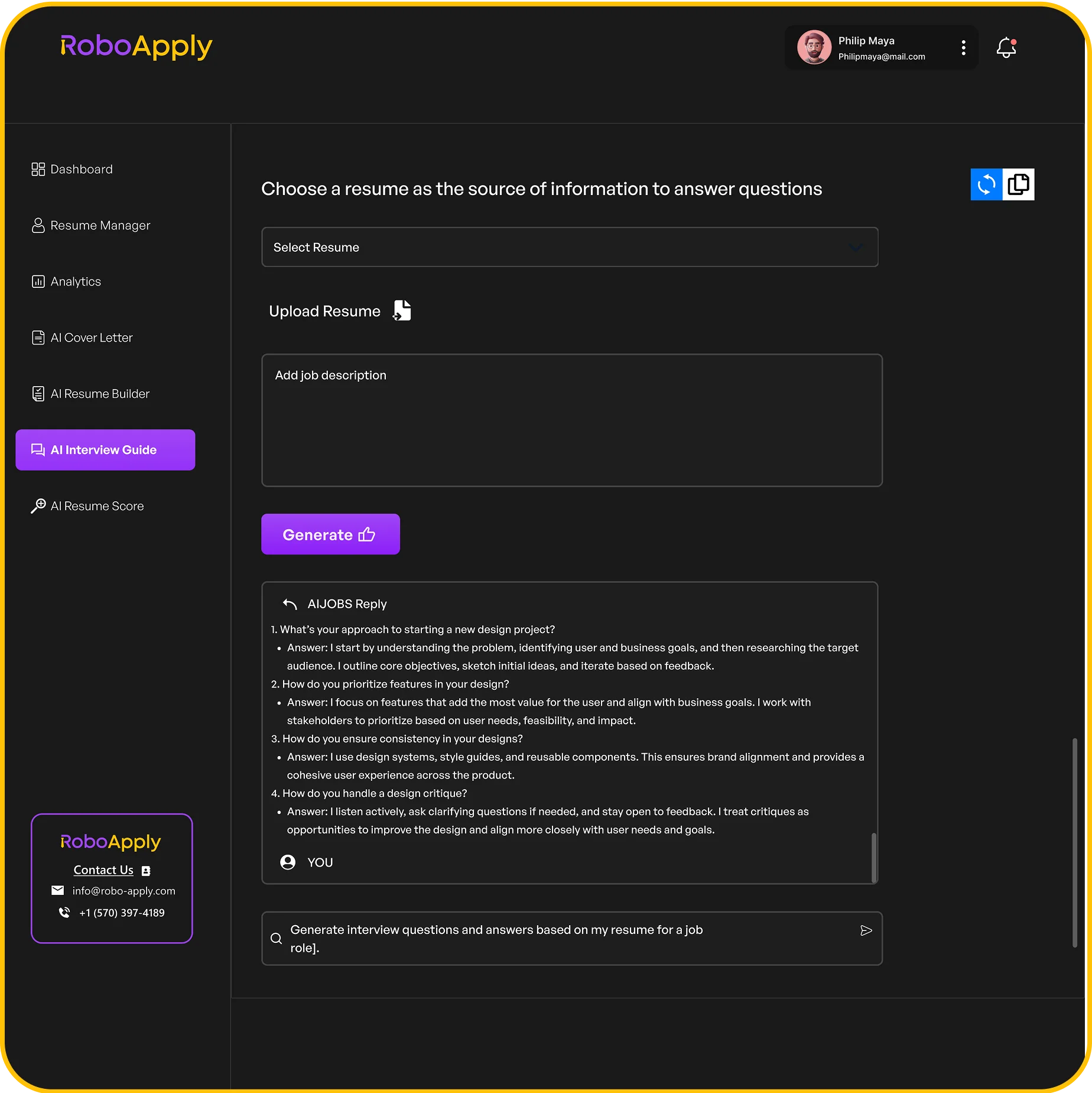1. Geriatric Home Health Aide Resume
When applying for a position as a geriatric home health aide, it’s important to tailor your resume to highlight the skills and experiences most relevant to caring for elderly patients. This means emphasizing your ability to handle the specific challenges and needs that come with geriatric care. Let’s look at how to make your resume shine.
Geriatric Home Health Aide Resume Sample | Plain text
Lanelle Smith
Marco Island, FL 33937Email: lanelle.smith@gmail.com
Phone: (687) 979-6489
Resume Summary
Experienced and compassionate Geriatric Home Health Aide with over 5 years of dedicated service in providing high-quality care to elderly patients. Adept at monitoring vital signs, coordinating with healthcare professionals, and offering emotional support to patients and their families.
What to Include
When crafting your geriatric home health aide resume, make sure to include these key elements:
- Experience with Common Geriatric Conditions: Highlight any experience you have with conditions like Alzheimer’s, dementia, arthritis, and osteoporosis. Mention specific care techniques you’ve used, such as memory care activities or mobility assistance.
- Medication Management: Clearly state your experience with medication reminders, administration, and record-keeping. If you’re familiar with specific medication types or schedules, include that information.
- Personal Care Skills: Emphasize your ability to assist with bathing, dressing, grooming, and toileting. Show that you understand the importance of maintaining dignity and respect while providing personal care.
- Communication and Empathy: Geriatric care requires strong communication skills and a compassionate approach. Highlight your ability to communicate effectively with elderly patients, their families, and healthcare professionals. Show that you can provide emotional support and companionship.
- Safety and Emergency Response: Include any training or experience you have in safety protocols, fall prevention, and emergency response. Mention certifications like CPR or First Aid.
Tailoring Your Skills
To really make your resume stand out, consider these tips:
- Use Keywords: Review job descriptions for geriatric home health aide positions and identify keywords related to skills, experience, and qualifications. Incorporate these keywords into your resume to show that you’re a good fit for the role.
- Quantify Your Accomplishments: Whenever possible, quantify your accomplishments to demonstrate the impact of your work. For example, "Reduced patient falls by 15% through implementation of safety protocols" or "Improved medication adherence by 20% through patient education."
- Highlight Relevant Certifications: Include any certifications that are relevant to geriatric care, such as Certified Nursing Assistant (CNA), Home Health Aide (HHA), or specialized training in dementia care.
By focusing on these key areas, you can create a geriatric home health aide resume that effectively showcases your skills and experience, and increases your chances of landing the job.
2. Hospice HHA Resume
When working with hospice patients, your resume needs to show you’re compassionate, skilled in end-of-life care, and able to handle the emotional demands of the job. Highlighting your experience with pain management, emotional support, and family communication is key. Let’s look at how to make your resume stand out.
Skills to Highlight
- Pain management is super important. Show you know how to administer medication and use non-pharmacological methods to keep patients comfortable.
- Emotional support is also key. Talk about how you help patients and families cope with grief, anxiety, and end-of-life decisions.
- Communication skills are a must. You need to be able to talk to patients, families, and the hospice team clearly and kindly.
Experience Section
When describing your experience, focus on what you did in hospice settings. For example:
- "Provided direct patient care, including bathing, dressing, and feeding, while ensuring comfort and dignity."
- "Administered medications and monitored vital signs, reporting changes to the nursing staff."
- "Offered emotional support and companionship to patients and families, actively listening to their concerns and providing a comforting presence."
Certifications and Training
Make sure to list any certifications or training related to hospice care. This could include:
- Hospice and Palliative Care Certification
- First Aid and CPR Certification
- Any specialized training in pain management or grief counseling
It’s important to show you understand the unique needs of hospice patients. Use keywords from the job description in your resume. This helps applicant tracking systems (ATS) recognize your qualifications. Tailor your resume to each job you apply for to show you’re a good fit.
Example Snippet
Here’s an example of how to describe your experience:
"Hospice Home Health Aide | Comfort & Peace Hospice, Brunswick, ME | June 2021 – Present
- Delivered specialized care to patients in a hospice setting, focusing on symptom management, pain relief, and overall comfort."
Show Compassion
Your resume should show you’re not just skilled but also compassionate. Use words that show empathy and caring. This helps hiring managers see you as someone who can provide the emotional support hospice patients need. Consider mentioning your commitment to maintaining privacy and dignity for clients.
3. Live-in Home Health Aide Resume
Being a live-in home health aide means you’re not just providing care; you’re becoming a part of someone’s daily life. Your resume needs to reflect that level of commitment and trust. It’s about showing you’re capable, compassionate, and reliable enough to handle the responsibilities of living in someone’s home and providing continuous care. Let’s look at how to make your resume shine.
Live-in HHA Resume: What to Emphasize
When crafting your live-in HHA resume, it’s important to highlight skills and experiences that demonstrate your ability to provide comprehensive care and build strong relationships. Focus on showcasing your adaptability, independence, and ability to handle emergencies. Here’s what to emphasize:
- Experience with Extended Care: Highlight any experience where you provided care for extended periods, demonstrating your stamina and commitment.
- Independent Living Skills: Show that you can manage household tasks, prepare meals, and maintain a clean and safe environment.
- Emergency Response: Include certifications like CPR and First Aid, and describe situations where you responded effectively to emergencies.
- Communication and Interpersonal Skills: Emphasize your ability to communicate effectively with patients and their families, and to build trusting relationships.
- Personal Qualities: Showcase traits like patience, empathy, and reliability, which are crucial for live-in care.
A live-in home health aide resume should clearly communicate your ability to provide consistent, high-quality care while respecting the patient’s independence and privacy. It’s about showing you can seamlessly integrate into their life and provide the support they need to live comfortably and safely at home.
Example Skills for a Live-in HHA Resume
- Medication Management
- Personal Hygiene Assistance
- Meal Preparation
- Light Housekeeping
- Mobility Assistance
- Companionship
- Vital Signs Monitoring
- Emergency Response
- Scheduling Appointments
- Transportation Assistance
Formatting Your Live-in HHA Resume
- Contact Information: Make sure your contact information is clear and up-to-date.
- Summary/Objective: Write a compelling summary or objective that highlights your experience and commitment to providing live-in care.
- Skills Section: List both hard and soft skills relevant to live-in care, such as medication management, personal care, and communication.
- Work Experience: Describe your previous roles, focusing on responsibilities and accomplishments that demonstrate your ability to provide comprehensive care.
- Education and Certifications: Include any relevant certifications, such as CNA, CPR, and First Aid. Also, list your educational background.
Showcasing Your Availability
Clearly state your availability for live-in positions. This can be included in your summary or objective, or in a separate section. For example:
- "Available for live-in positions, offering 24/7 care and support."
- "Seeking a live-in home health aide position with flexible scheduling."
By highlighting these key areas, your hotel housekeeping resume will effectively communicate your qualifications and make you a strong candidate for live-in home health aide positions.
4. Pediatric Home Health Aide Resume
Working with children requires a special touch, and your resume needs to show that you have it. A pediatric home health aide resume should highlight your experience with children, your patience, and your ability to handle the unique challenges that come with caring for young patients. It’s important to showcase your understanding of child development and any specialized skills you have in this area.
Think about including these points:
- Experience with specific age groups (infants, toddlers, school-aged children).
- Knowledge of common childhood illnesses and conditions.
- Ability to create a safe and stimulating environment for children.
- Experience with administering medication and following medical instructions.
- Strong communication skills to interact with children and their families.
When describing your responsibilities, use action verbs that show your impact. Instead of saying "Responsible for feeding children," try "Provided nutritional support to children, ensuring proper dietary intake and promoting healthy growth." This makes your resume more dynamic and shows potential employers what you can do.
Remember to tailor your resume to each job you apply for. If the job description mentions specific skills or experience, make sure to highlight those in your resume. A well-crafted caregiver resume examples can significantly increase your chances of landing an interview.
Consider this example:
- Objective: Compassionate and dedicated Pediatric Home Health Aide with 3+ years of experience providing exceptional care to children with diverse medical needs. Proven ability to create a nurturing and stimulating environment, while adhering to strict medical protocols. Seeking a challenging position where I can utilize my skills and experience to improve the lives of young patients and their families.
- Skills:
- Pediatric CPR and First Aid Certified
- Medication Administration (oral, topical)
- Special Needs Care (Autism, Down Syndrome)
- Vital Signs Monitoring
- Nutritional Support and Feeding
- Bathing and Hygiene Assistance
- Play Therapy and Activities
- Communication with Children and Families
- Experience:
- Pediatric Home Health Aide, ABC Home Healthcare, Anytown, USA (2022 – Present)
- Provided comprehensive care to children aged 6 months to 12 years with various medical conditions, including asthma, cerebral palsy, and post-surgical recovery.
- Administered medications, monitored vital signs, and documented patient progress accurately.
- Developed and implemented age-appropriate activities to promote physical, cognitive, and emotional development.
- Collaborated with parents and healthcare professionals to ensure coordinated and effective care.
- Childcare Provider, XYZ Family, Anytown, USA (2020 – 2022)
- Provided attentive and nurturing care to two children aged 2 and 4 years.
- Prepared meals, assisted with bathing and dressing, and supervised playtime activities.
- Maintained a safe and clean environment for the children.
- Pediatric Home Health Aide, ABC Home Healthcare, Anytown, USA (2022 – Present)
- Education:
- Certified Nursing Assistant (CNA), Anytown Training Institute, Anytown, USA (2020)
- High School Diploma, Anytown High School, Anytown, USA (2018)
This example shows how to present your skills and experience in a way that highlights your qualifications for a pediatric home health aide position. Remember to tailor it to your own specific background and the requirements of the job you’re applying for. You can also find resume examples online to help you get started.
5. Home Health Aide Specialist
As a Home Health Aide Specialist, you’re not just providing care; you’re bringing a focused skill set to meet specific patient needs. This specialization can make your resume stand out, showing employers you have expertise in a particular area of home health.
Here’s how to highlight your specialist skills:
- Clearly Define Your Specialization: State your area of expertise upfront. Are you a wound care specialist, a dementia care expert, or skilled in post-operative care? Make it obvious.
- Showcase Relevant Experience: Focus on roles and responsibilities that directly relate to your specialization. Use action verbs to describe how you’ve applied your skills.
- Include Specific Certifications: List any certifications or training you’ve completed that support your specialization. This adds credibility and demonstrates your commitment to ongoing learning.
Think about the unique challenges and rewards of your specialization. What specific problems do you solve for your patients? How do you improve their quality of life? These are the stories that will resonate with employers.
Consider this example:
Example:
- Specialization: Dementia Care
- Experience: Provided specialized care for patients with Alzheimer’s disease and other forms of dementia, implementing cognitive stimulation activities and managing behavioral symptoms.
- Certification: Certified Dementia Practitioner (CDP)
By highlighting your specialist skills, you can target your resume to specific job openings and increase your chances of landing an interview. Remember to tailor your resume to each position, emphasizing the skills and experience that are most relevant to the employer’s needs. Consider using a resume builder to help you format your resume and highlight your skills.
6. Resume Sections
Okay, so you’re ready to put your Home Health Aide resume together. But what sections should you include? Here’s the lowdown on the must-haves and some extras to consider.
Contact Information
This is a no-brainer. Make it easy for employers to reach you. Include:
- Full name
- Phone number
- Email address
- Location (city, state)
Resume Summary or Objective
This is your chance to make a strong first impression. A summary highlights your experience and skills, while an objective states your career goals. If you’re new to the field, go with an objective. Otherwise, a summary is usually the better choice. Check out some HHA resume objectives for inspiration.
Skills
List both hard and soft skills relevant to home health aide positions. Think about things like:
- Patient care
- Vital signs monitoring
- Medication administration
- Communication
- Empathy
Work Experience
Detail your previous jobs, focusing on responsibilities and accomplishments that showcase your abilities as a Home Health Aide. Use action verbs and quantify your achievements whenever possible. Tailor this section to match the specific requirements of the job you’re applying for. You can find examples of caregiver resume samples to help you craft this section.
Education and Certifications
Include your high school diploma or GED, any relevant certifications (like CNA or HHA certification), and any additional training you’ve completed. Be sure to list the full name of the certification, the issuing organization, and the date you received it.
Optional Sections
These sections can help you stand out from the crowd:
- Volunteer Experience: Shows your commitment to helping others.
- Awards and Recognition: Highlights your achievements.
- Languages: Useful if you’re applying for positions where you’ll need to communicate with patients who speak a different language.
- Interests: Can reveal more about your personality and interests.
Remember to tailor your resume to each job you apply for. Carefully review the job description and highlight the skills and experience that are most relevant to the position. This will show employers that you’re a good fit for their needs.
7. What to Highlight in a Home Health Aide Resume
When crafting your home health aide resume for 2025, it’s important to focus on the skills and experiences that are most relevant to the job. Think about what employers are really looking for in a candidate. It’s not just about listing your duties; it’s about showing how you excel in those duties. Let’s break down what you should emphasize to make your resume stand out.
First, make sure to highlight your experience in patient care. This includes everything from assisting with daily living activities to monitoring vital signs. Employers want to see that you have a solid understanding of how to provide quality care. Also, don’t forget to include any certifications you have, such as home health aide (HHA) certification or CPR certification. These certifications show that you have the necessary training and qualifications to do the job.
Next, focus on your soft skills. Being a home health aide requires a lot of empathy, communication, and patience. These skills are just as important as your technical skills. Give examples of how you’ve used these skills to improve the lives of your patients. For example, you could mention how you helped a patient feel more comfortable and confident during their recovery.
Finally, quantify your accomplishments whenever possible. Instead of just saying that you provided excellent care, give specific examples of how you went above and beyond. For example, you could say that you helped a patient reduce their blood pressure by 10 points through diet and exercise. Or, you could mention that you received positive feedback from a patient’s family for your compassionate care. Quantifying your accomplishments shows employers that you’re not just saying you’re good at your job; you’re proving it.
Remember, your resume is your first impression. Make it count by highlighting your most relevant skills and experiences. Show employers that you have what it takes to be a successful home health aide.
Here are some key areas to focus on:
- Personal Care Skills: Showcasing your ability to assist with bathing, dressing, and toileting.
- Medical Knowledge: Demonstrating your understanding of medication administration and vital signs monitoring.
- Communication Skills: Highlighting your ability to communicate effectively with patients and their families.
- Empathy and Compassion: Emphasizing your ability to provide emotional support and understanding.
- Organizational Skills: Showing your ability to manage schedules, appointments, and documentation.
By focusing on these key areas, you can create a resume that will impress employers and help you land your dream job as a home health aide. Remember to tailor your resume to each job you apply for, highlighting the skills and experiences that are most relevant to the specific position. Good luck!
To make your resume even stronger, consider adding a skills section that lists both your hard and soft skills. This will give employers a quick overview of your qualifications and make it easier for them to see why you’re a good fit for the job.
8. Make Sure You Include the Following Details
When crafting your home health aide resume for 2025, there are some must-have details to include. These elements ensure your resume is complete, professional, and effectively showcases your qualifications to potential employers. Let’s get into it.
Including these details will help you stand out!
- Contact Information: This seems obvious, but make sure your name, phone number, email address, and professional-looking LinkedIn profile (if you have one) are clearly visible at the top. Double-check for typos!
- Certifications: List all relevant certifications, such as CPR certification, first aid, and any specialized training you’ve completed. Include the issuing organization and expiration date.
- Skills: Create a dedicated skills section that highlights both hard and soft skills. Hard skills might include medication administration or vital signs monitoring, while soft skills could be communication, empathy, and patience. Tailor this section to match the job description.
- Work Experience: Detail your previous roles, focusing on responsibilities and accomplishments relevant to home health care. Use action verbs to describe your duties and quantify your achievements whenever possible. For example, instead of saying "Provided patient care," say "Provided comprehensive patient care to five clients daily, improving their comfort and well-being."
- Education: Include your highest level of education, as well as any relevant coursework or training programs. If you have a degree in a related field, such as nursing or social work, be sure to highlight it.
A well-organized resume that includes all the necessary details shows employers that you are thorough, detail-oriented, and committed to providing quality care. It also makes it easier for them to quickly assess your qualifications and determine if you’re a good fit for the position.
9. HHA Resume Objectives
Your HHA resume objective is a short statement that tells the hiring manager what you hope to achieve in the role. It’s most useful if you’re new to the field or changing careers. It should highlight your skills and enthusiasm for providing quality care.
Here are a few things to keep in mind when writing your HHA resume objective:
- Keep it concise: Aim for 2-3 sentences.
- Focus on the employer’s needs: Show how you can benefit them.
- Highlight relevant skills: Mention skills like compassion, patience, and experience with specific patient needs.
A strong resume objective can make a big difference, especially if you lack extensive experience. It shows you’re motivated and ready to learn, making you a more attractive candidate.
Here are a couple of examples:
- "Compassionate and dedicated individual seeking a Home Health Aide position at [Company Name]. Eager to utilize my skills in patient care, medication management, and emotional support to improve the quality of life for patients in their homes. Certified Home Health Aide (CHHA) with a strong commitment to providing personalized and attentive care."
- "Enthusiastic and reliable caregiver looking to contribute my skills and experience to [Company Name] as a Home Health Aide. Possessing a solid background in assisting with daily living activities, monitoring vital signs, and providing companionship. Aiming to create a safe and supportive environment for patients while promoting their independence and well-being."
10. Resume Job Descriptions, Responsibilities and Duties
When you’re writing your home health aide resume, it’s super important to show exactly what you’ve done in previous jobs. This isn’t just about listing tasks; it’s about showing how you made a difference in your patients’ lives. Think about the specific things you did and how they helped the people you cared for. Let’s get into how to write these descriptions so they really stand out.
Show, Don’t Just Tell
Instead of just saying you "provided care," describe what that care looked like. Did you help someone with mobility issues get around their home? Did you prepare meals that met specific dietary needs? The more specific you are, the better. This helps employers see the real impact of your work.
Use Action Verbs
Start each bullet point with a strong action verb. Instead of "Responsible for bathing patients," try "Assisted patients with bathing and personal hygiene, personal care ensuring their comfort and dignity." Action verbs make your descriptions more dynamic and engaging.
Here are some good action verbs to consider:
- Assisted
- Provided
- Administered
- Monitored
- Documented
- Communicated
- Supported
- Facilitated
Tailor to the Job
Read the job description carefully and tailor your resume to match. If the job emphasizes experience with dementia patients, make sure to highlight any experience you have in that area. The more your resume aligns with the job requirements, the better your chances of getting an interview.
Example Job Descriptions
Here are a few examples of well-written job descriptions for a home health aide resume:
- Provided comprehensive personal care assistance to elderly clients, including bathing, dressing, and toileting, improving their daily comfort and hygiene.
- Prepared nutritious meals according to specific dietary needs and preferences, supporting clients’ overall health and well-being.
- Administered medications as directed by healthcare professionals, ensuring accurate dosage and timely delivery.
- Monitored vital signs and reported any changes or concerns to the supervising nurse, contributing to proactive healthcare management.
- Assisted patients with daily living and personal care in their homes.
- Provided emotional support and companionship to clients, fostering a positive and supportive environment.
Remember, the goal is to show employers that you have the skills and experience they’re looking for. By using specific examples and strong action verbs, you can create job descriptions that really stand out.
Focus on Results
Whenever possible, try to quantify your accomplishments. For example, instead of saying "Improved patient mobility," say "Improved patient mobility by 20% through consistent exercise and support." Numbers help employers understand the impact of your work. If you can’t use numbers, focus on the positive outcomes of your actions. For example, "Reduced patient anxiety through compassionate communication and active listening."
11. Highlight Your Accomplishments
When you’re listing your experiences, it’s easy to just write down the duties you did, like they’re listed in the job description. But that won’t make you stand out. Everyone else is probably doing the same thing!
Instead, try to use action-packed statements that show what makes you different, what you’re proud of, or what you actually accomplished in your past jobs. Focus on what you achieved, not just what you did.
Here’s a simple example:
Flat, Simple Duty:
- Provided care to elderly patients at home.
- Monitored the condition of patients by observing their physical and mental condition.
Accomplishment Statement:
- Provided compassionate one-to-one care to elderly patients, up to 10 patients per shift.
- Monitored the condition of disabled patients by observing their physical and mental condition. My main focus is to connect on a personal level, so I can make them feel safe and comfortable.
Highlighting accomplishments is about showing the impact you made. It’s not just about listing tasks; it’s about demonstrating how you improved patient care, streamlined processes, or contributed to a better work environment. Think about specific situations where you went above and beyond, and then describe those situations in a way that showcases your skills and dedication.
12. Quantifying Your Resume
It’s not enough to say you’re a good home health aide. You need to show it. One of the best ways to do that is by quantifying your accomplishments. Quantifying your resume means using numbers to demonstrate the impact you’ve had in your previous roles. This makes your achievements more concrete and easier for potential employers to understand.
Here’s how to do it:
- Think about numbers: What can you count? How many patients did you care for? By what percentage did you improve their well-being?
- Use specific data: Instead of saying "improved patient outcomes," say "reduced patient hospital readmission rates by 15%."
- Focus on results: What was the impact of your actions? Did you save the company money? Did you improve patient satisfaction?
Quantifying your resume isn’t just about adding numbers; it’s about telling a story of your impact. It helps employers see the value you bring to the table and makes your resume stand out from the competition. It’s a key part of crafting a compelling application for HHA positions.
Here are some examples of how to quantify your achievements:
- Administered medications to an average of 10 patients daily, ensuring timely and accurate dosage.
- Reduced patient falls by 20% through proactive safety measures and fall prevention strategies.
- Increased patient satisfaction scores by 15% through compassionate care and effective communication.
- Managed care for 5 patients with complex medical needs, including wound care, medication management, and vital sign monitoring.
- Documented patient care activities and progress in compliance with regulatory requirements, maintaining 100% accuracy in record-keeping.
By quantifying your resume, you’re not just listing your responsibilities; you’re demonstrating your value and showing potential employers what you can do for them. This is especially important in the competitive field of home health care, where employers are looking for candidates who can make a real difference in the lives of their patients. Make sure you effectively quantify accomplishments on your resume.
Making your resume stand out means showing off your wins with numbers. Instead of just saying you helped customers, tell them you helped "50 customers a day." This makes your skills real and easy to see. Want to make your resume super strong? Check out our website for more tips on how to make your resume shine!
Wrapping Things Up
So, there you have it. Getting your home health aide resume just right can feel like a big job, but it’s totally doable. Remember, the main goal is to show off what makes you good at this kind of work. Think about all the ways you help people every day and put that on paper. A clear, honest resume that shows your skills and how much you care will definitely get noticed. You’ve got this!
Frequently Asked Questions
What does a home health aide do?
A home health aide helps people who are sick, disabled, or elderly in their homes. They assist with everyday tasks like getting dressed, bathing, eating, and taking medicine. They also help keep the home tidy and might remind clients about appointments.
What education or training do I need to be a home health aide?
You’ll need at least a high school diploma or GED. Many states also require you to complete a training program and pass a test to become certified. Some jobs might ask for more specific training or experience.
What skills are most important for a home health aide resume?
It’s super important to show you’re good at caring for people, have excellent communication skills, and can be trusted. Also, mention if you’re good at managing your time and solving problems.
Should I include special certifications or training on my resume?
Yes, it’s a great idea! If you have special training or experience with certain groups, like kids, older folks, or people in hospice, definitely put that on your resume. It shows you have specific skills that might be needed.
How can I make my home health aide resume stand out?
Make sure your resume is easy to read. Use clear headings and bullet points. Focus on your achievements, not just your duties. For example, instead of saying “helped clients,” say “improved client comfort by 20% through personalized care plans.”
What sections should be on my home health aide resume?
You should include your contact info, a summary or objective, your work history, education, and any special skills or certifications you have. Make sure everything is up-to-date and easy to find.
How should I describe my past jobs as a home health aide?
When you write about your past jobs, use strong action words like “assisted,” “managed,” “cared for,” and “supported.” Also, try to use numbers to show your impact, like “cared for 5 clients daily” or “helped clients improve mobility by 15%.”
Where can I find good examples of home health aide resumes?
You can find many examples online, including on our website, RoboApply. Look for resumes that match the type of home health aide job you want, like geriatric, pediatric, or live-in.











